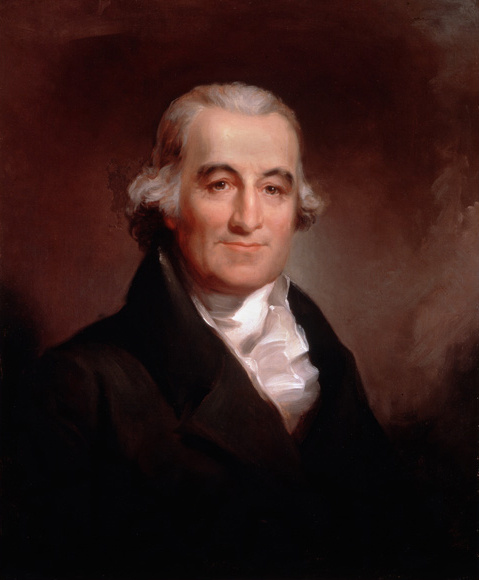Mentor
Caspar Wistar (1761-1818)
Copy by Thomas Sully (1830)
from the original painting by Bass Otis (1817)[1]Thomas Sully (1783-1872) and Bass Otis (1784-1861) were among the leading portraitists in America at the time.
Courtesy American Philosophical Society, Philadelphia. Oil on canvas, 30 x 25 1/8 in.
In the spring of 1803, when Caspar Wistar received a letter from President Jefferson, he was teaching anatomy at the University of Pennsylvania and was vice-president of the American Philosophical Society (APS). Wistar and Jefferson were friends and had worked together on the collection and identification of the bones of the Megalonyx, as well as on several other scientific projects.[2]Jefferson initiated the science of vertebrate paleontology in America with the reading of his paper, “A Memoir on the Discovery of Certain Bones of a Quadruped of the Clawed Kind in the Western … Continue reading Most likely, the conversation of Wistar and Lewis was of many things, including fossils, and the chance for Lewis to hunt along the banks of the Missouri for signs of prehistoric life. In July 1803, after Lewis had left Philadelphia, Wistar sent Jefferson a list of general questions to be forwarded to Lewis that were pertinent to the Expedition’s goals. The list has never been found.
When Lewis met him, Wistar was an eminent physician and professor—popular with his students, beloved by his patients. Born in 1761 to a Quaker family, Wistar was inspired to become a doctor at the age of 16 as he attended the wounded during the War for Independence at the Battle of Germantown. Classically educated at the Public School of Philadelphia, he was soon studying with local physicians and in 1779 entered the University of Pennsylvania. Graduating with an examination reputed to be one of the best ever at the University, Wistar went abroad, studying anatomy with John Hunter in London for a year and then on to the medical school at Edinburgh. His academic performance was outstanding and his fellow students elected him president of the Royal Medical Society and the Edinburgh Natural History Society.
Medical Doctor
Wistar graduated with the degree of M.D. from Edinburgh in 1786 and, after walking the Highlands of Scotland, returned to Philadelphia in 1787. Within four months he was elected a junior fellow at the newly formed College of Physicians. Soon after, he was elected to the American Philosophical Society, and appointed to the Philadelphia Dispensary as an attending physician. Wistar succeeded Benjamin Rush as professor of chemistry at the College of Philadelphia, and married Isabella Marshall in the same year. Sorrow followed too soon; Isabella died in 1790.
When the college’s faculty merged with that of the University of Pennsylvania in 1792, Wistar became an adjunct professor in anatomy, midwifery and surgery. In his own practice, oblivious to rank and social status, with an empathetic, respectful and comforting manner, Wistar tirelessly researched his patients’ illnesses and developed treatments. Peers describe Wistar as a man patient in the search for truth—intellectually “strong rather than brilliant.” This intellectual strength of seeking truth by studying broadly, with patience and without prejudice, would serve him well in the years to come.
The year 1793 was an eventful one for Wistar. He became a staff member at the Pennsylvania Hospital and was elected curator at the APS. Autumn brought one of the worst yellow fever epidemics in city history. Though more than half the population left, Wistar stayed in town to assist Dr. Rush in treating the stricken. But when Wistar himself became ill with the fever, he asked Dr. Adam Kuhn to treat him, and survived. Subsequently Wistar rejected Rush’s employment of bleeding and purging as basic modes of dealing with illnesses.
A System of Anatomy
Until Wistar’s day, anatomical textbooks came from overseas. But in 1811 he completed and published the first volume of A System of Anatomy for the Use of Students of Medicine; the second volume was published in 1814. As a member of the American Philosophical Society beginning in 1787, Wistar was well placed socially as well as academically, sharing in many of the society’s activities and assuming its presidency in 1815. In this venue he undertook the first comparative study of vertebrate fossils in America, publishing in 1799 a detailed study of the Megalonyx bones that Thomas Jefferson had brought to the society’s members in 1797.
Wistar is perhaps most famous for his salons, which continue to this day in his honor, now known as Wistar Parties. In 1798, at the age of 37, Wistar had married Elizabeth Mifflin and, by 1799 or 1800, the couple was regularly entertaining on Sunday evenings at their home at Fourth & Prune (today’s Locust) Streets. Wistar, a naturally good host, invited members of the APS as well as renowned visitors to the city. Guests described the evenings as “intellectual banquets,” with a modest, comfortable atmosphere. With a guest list including the scientific elite of the city, if not the country, Wistar was known to subtly guide conversations towards the fields of expertise of his guests and keep the tone from becoming overly technical and pretentious.
It is said that Wistar used his self-control and constant drive for self-improvement to overcome his temper and develop a poise which rarely left him. It had done so when he was a young man; a duel in which he took part risked his obtaining permission in 1783 to study abroad. In like manner, aware that nature had not made him an exceptional teacher, he worked hard to improve; he succeeded in developing a clear, charismatic style. Ultimately, his passion for his subject inspired so large a number of students that it was necessary to schedule multiple subdivisions of his “bone classes” in which large models of bones were displayed. Caspar Wistar had become an exceptional teacher, famous for his anatomy lectures, and honored as a person.
Related Pages
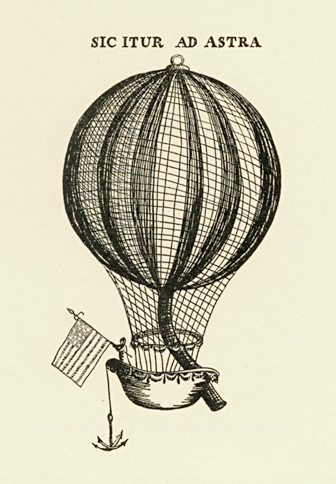

It is not difficult to imagine Jefferson—who probably witnessed the flight—just a few years later contemplating another kind of adventure and recalling those days of excitement and tragedy in Philadelphia.
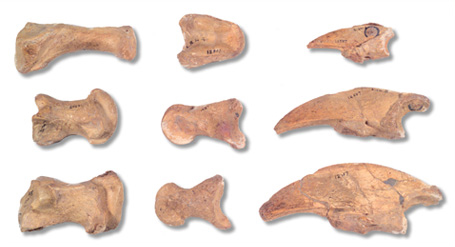

Thomas Jefferson first believed them to be from a kind of lion, which he thought might still survive in the distant wilds of western America. No doubt Lewis had held them too and would be looking for live specimens.
October 6, 1803
Ancient bones
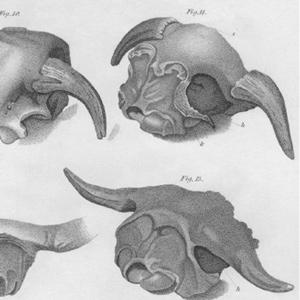

Lewis is likely at Big Bone Lick collecting ancient bones for President Jefferson. Fellow traveler Thomas Rodney and scientist Caspar Wistar describe bones from there resembling the American bison.
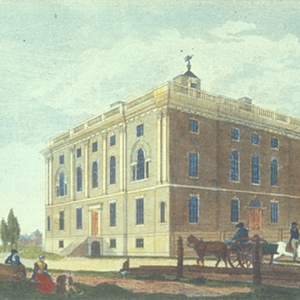

When Meriwether Lewis traveled to Philadelphia in 1802, his guide to the city was Mahlon Dickerson who gave him a survey of people and places well beyond the privilege or opportunity of most Philadelphians of the time.
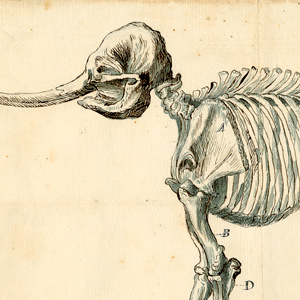

Would Lewis recognize living animals, examples of which he had seen only as bones in Philadelphia? Would the hunting parties of the corps unexpectedly find herds of mastodons, and packs of stealthy predators, or a lumbering solitary grazer previously never seen by humans?
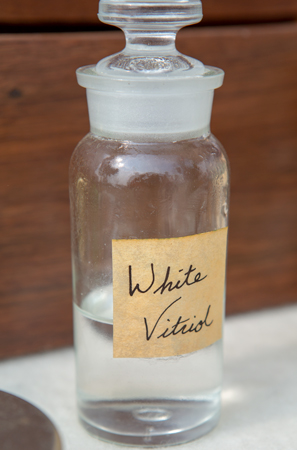

The advice Dr. Rush had given Lewis often sounds rather odd or useless by modern standards, and wasn’t followed to the letter by the captains, but it fulfilled Jefferson’s request.
Notes
| ↑1 | Thomas Sully (1783-1872) and Bass Otis (1784-1861) were among the leading portraitists in America at the time. |
|---|---|
| ↑2 | Jefferson initiated the science of vertebrate paleontology in America with the reading of his paper, “A Memoir on the Discovery of Certain Bones of a Quadruped of the Clawed Kind in the Western Parts of Virginia” to the members of the American Philosophical Society on 10 March 1797. He theorized that the three large claws and associated bones were the remains of an extinct lion which he named “megalonyx”—”giant claw.” Two years later, Wistar correctly identified the remains as belonging to a giant ground sloth, and in 1822 officially named it Megalonyx jeffersonii (meg-a-lah-nix jef-fer-so-nee-eye). |
Experience the Lewis and Clark Trail
The Lewis and Clark Trail Experience—our sister site at lewisandclark.travel—connects the world to people and places on the Lewis and Clark Trail.
Discover More
- The Lewis and Clark Expedition: Day by Day by Gary E. Moulton (University of Nebraska Press, 2018). The story in prose, 14 May 1804–23 September 1806.
- The Lewis and Clark Journals: An American Epic of Discovery (abridged) by Gary E. Moulton (University of Nebraska Press, 2003). Selected journal excerpts, 14 May 1804–23 September 1806.
- The Lewis and Clark Journals. by Gary E. Moulton (University of Nebraska Press, 1983–2001). The complete story in 13 volumes.
